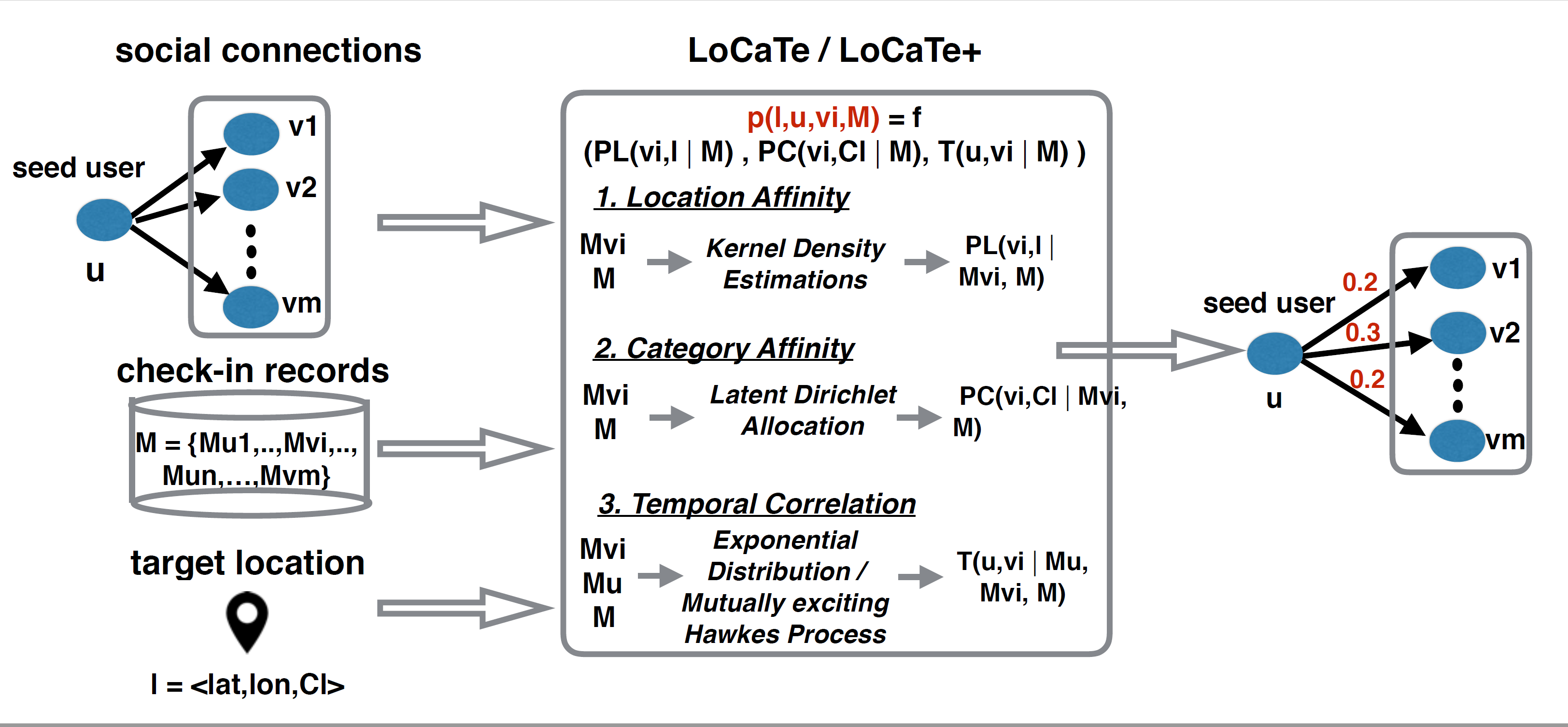Extending the work published at IJCAI 2017, this paper presents a comprehensive view of the problem of modeling location-specific influence between users in LBSNs. While its basic model remained unchanged from earlier conference version, the temporal correlation model made use of more sophisticated mutually exciting Hawkes’ processes. In addition, we showed the impact of improved influence modeling in various tasks in LBSNs such as location promotion and recommendation tasks, on much bigger real-world datasets than any of the previous work had used!
Abstract Location-based social networks (LBSNs) such as Foursquare offer a platform for users to share and be aware of each other’s physical movements. As a result of such a sharing of check-in information with each other, users can be influenced to visit (or check-in) at the locations visited by their friends. Quantifying such influences in these LBSNs is useful in various settings such as location promotion, personalized recommendations, mobility pattern prediction etc. In this paper, we develop a model to quantify the influence specific to a location between a pair of users. Specifically, we develop a framework called LoCaTe, that combines (a) a user mobility model based on kernel density estimates; (b) a model of the semantics of the location using topic models; and © a user correlation model that uses an exponential distribution. We further develop LoCaTe+, an advanced model within the same framework where user correlation is quantified using a Mutually Exciting Hawkes Process. We show the applicability of LoCaTe and LoCaTe+ for location promotion and location recommendation tasks using LBSNs. Our models are validated using a long-term crawl of Foursquare data collected between Jan 2015 - Feb 2016, as well as other publicly available LBSN datasets. Our experiments demonstrate the efficacy of the LoCaTe framework in capturing location-specific influence between users. We also show that our models improve over state-of-the-art models for the task of location promotion as well as location recommendation.
